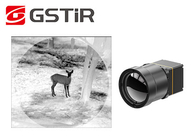-
Thermal Camera Core
-
Thermal Security Camera
-
Drone Thermal Camera
-
EO IR Systems
-
Thermal Imaging Binoculars
-
Infrared Thermal Camera Module
-
High Resolution Thermal Camera Module
-
Cooled Infrared Detectors
-
Optical Gas Imaging
-
Thermal Camera For Fever Detection
-
Cooled Camera Modules
-
Vehicle Mounted Thermal Camera
-
Integrated Dewar Cooler Assembly
-
Uncooled Infrared Detectors
3 Axis LWIR Thermal Camera Core With 8~14μM Spectral Range For Robots

Contact me for free samples and coupons.
Whatsapp:0086 18588475571
Wechat: 0086 18588475571
Skype: sales10@aixton.com
If you have any concern, we provide 24-hour online help.
x| Resolution | 640x512 | Power Consumption | 0.8W |
|---|---|---|---|
| Spectral Range | 8~14μm | Pixel Pitch | 12μm |
| NETD | <40mK | Frame Rate | 25Hz/30Hz |
| Highlight | 3 Axis Thermal Camera Core,14uM Spectral Range Thermal Module,Robots Lwir Camera Core |
||
LWIR Uncooled 640x512 12μm Thermal Imaging Module with 25mm Lens for Outdoors
TWIN612 thermal module is a new arrival product developed by Global Sensor Technology. It integrates 640×512/12µm ceramic package uncooled infrared detector. With typical NETD<40mk, the TWIN612 thermal module could present clearer, sharper and more detailed image.
With temperature measurement range of -20℃~150℃/0~550℃, accuracy of ±2℃ or ±2% and frame rate up to 30Hz, the thermal module guarantees smooth thermal image and accurate temperature measurement.
The TWIN612 thermal module has the advantages of compact design, light weight structure and power consumption as low as 0.8w. With enhanced image algorithms and temperature measurement function, the TWIN612 thermal module presents more stable images and accurate temperature.
Ceramic packaging process is similar to metal packaging, which is a mature infrared detector packaging technology. Compared with metal packaging, the volume and weight of the packaged detector will be greatly reduced. Thus, the TWIN612 thermal module could be applied to industries that have strict requirements on size, weight and power consumption.
- Mini Size: 25.4mm×25.4mm×35mm
- Light Weight: 25g
- Typical NETD<40mk
- Sharp, Clear Thermal Imaging
- Typical Power Consumption as Low as 0.8W
| Model | TWIN612/R |
| IR Detector Performance | |
| Resolution | 640×512 |
| Pixel Size | 12μm |
| Spectral Range | 8~14μm |
| Typical NETD | <40mK |
| Image Processing | |
| Frame Rate | 25Hz/30Hz |
| Start-up Time | 6s |
| Analog Video | PAL/NTSC |
| Digital Video | YUV/BT.656/LVDS/USB2.0 |
| Image Display | 11 in Total (White Hot/Lava/Ironbow/Aqua/Hot Iron/Medical/Arctic/Rainbow1/Rainbow2/Red Hot/Black Hot) |
| Image Algorithm | NUC/3D/2D/DRC/EE |
| Electrical Specifications | |
| Standard External Interface | 50pin_HRS |
| Communication Interface | RS232/USB2.0 |
| Supply Voltage | 4~5.5V |
| Typical Power Consumption | 0.8W |
| Temperature Measurement | |
| Operating Temperature Range | -10℃~50℃ |
| Temperature Measurement Range | -20℃~150℃, 0℃~550℃ |
| Temperature Measurement Accuracy | Greater of ±2℃ or ±2% |
| SDK | Windows/Linux; Achieve Video Stream Analysis and Conversion from Gray to Temperature |
| Physical Characteristics | |
| Dimension (mm) | 25.4×25.4×35 (Without Lens) |
| Weight | 25g (Without Lens) |
| Environmental Adaptability | |
| Operating Temperature | -40℃~+70℃ |
| Storage Temperature | -45℃~+85℃ |
| Humidity | 5%~95%, non-condensing |
| Vibration | 5.35grms, 3 Axis |
| Shock | Half Sine Wave, 40g/11ms, 3 Axis, 6 Direction |
| Optics | |
| Optional Lens | Fixed Athermal: 13mm |
The TWIN612/R thermal imaging module is applied to the field of Thermography, Security Monitoring, UAV Payloads, Robots, Intelligent Hardware, ADAS, Firefighting & Rescue
![]()
1. DRI Range
It is a means of measuring the distance at which an infrared detector can produce an image of specific target and can be divided into detection range, recognition range, identification range.
D (Detection): ability to distinguish an object from the background
R (Recognition): ability to classify the object class (animal, human, vehicle, boat …)
I (Identification): ability to describe the object in details (a man with a hat, a deer, a Jeep …)
According to Johnson's criteria, when the probability of target detail visible at the DRI distance is 50%, the minimum number line pairs of the target is 1:3:6 (or 1:4:8), and the corresponding minimum number of pixels is 2:6:12 (or 2:8:16).
Assuming that the target diameter is H, the focal length is f, the pixel size is d, and the number of line pairs is n, then the view distance L=H×f/(2n×d)












